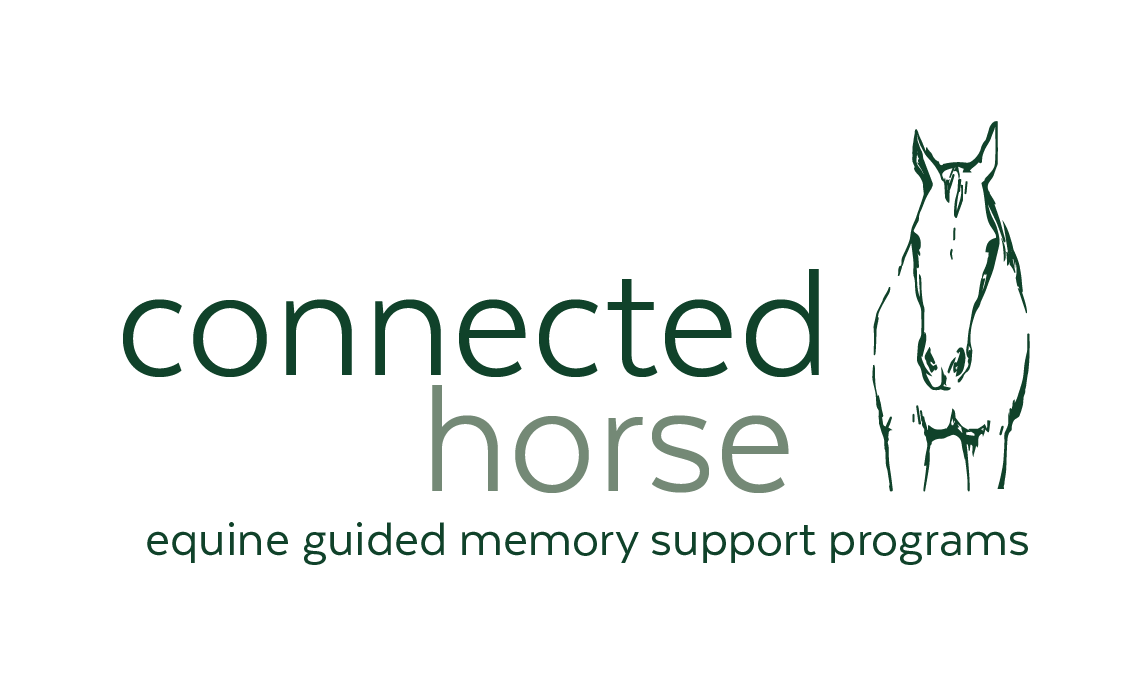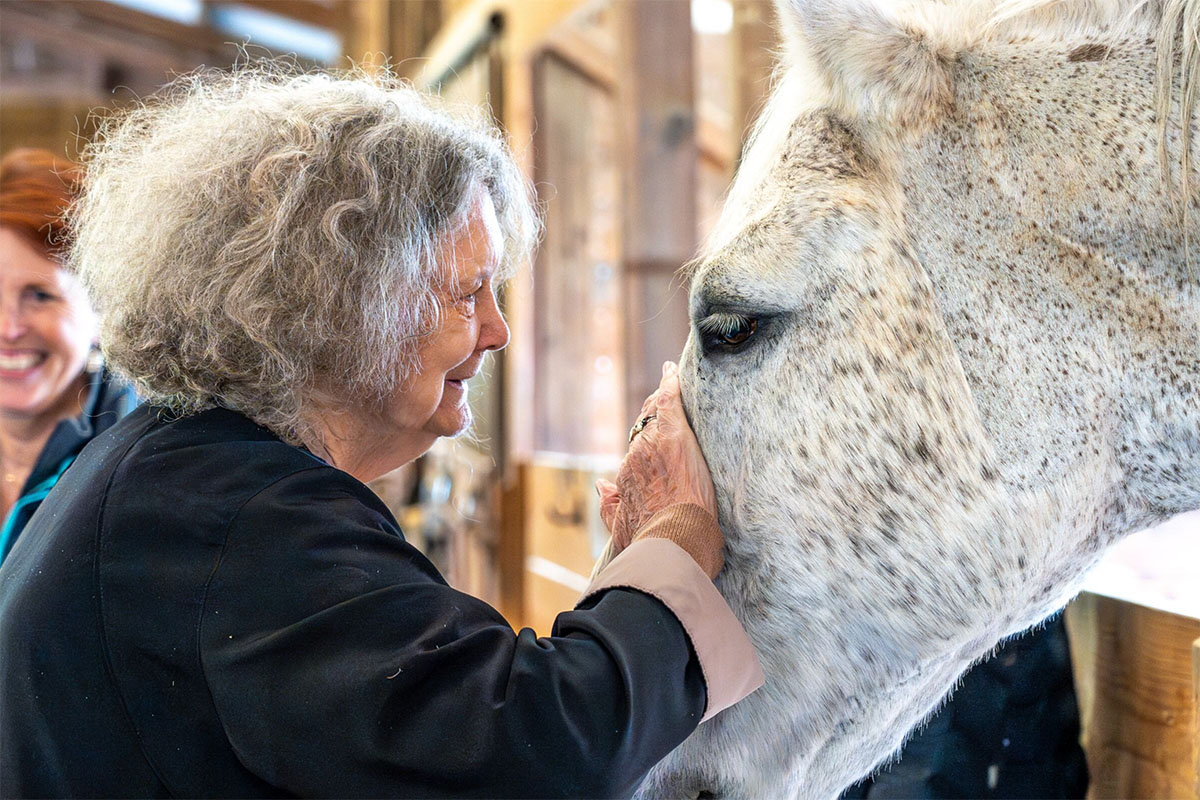The Unscripted Moments Are Where the Magic Happens
Trusting in the Process
of the Human-Horse Bond
Equine-assisted learning is a growing practice, bringing humans and horses together to experience the power of human-horse connections. For us at Connected Horse, the power of our work comes from the process of deepening connections between participants and horses. Our approach relies on facilitation rather than instruction.
The approach to teaching and self-reflection is the main difference between instruction and facilitation. Instructors are content-focused and directive, while facilitators create a self-paced, collaborative environment for individuals and groups. Connected Horse facilitators provide guidance and some direction; the exercises between the participants and the horses support the deeper connection; however, the sole purpose of facilitating and introducing the exercises is to allow opportunities for participants and horses to build trust and relationships. It is not about mastering the exercises; it is about using the exercises to introduce interactions that foster communication and connection with the horses.
In her 2002 book Understanding Facilitation: Theory and Principles, Christine Hogan defines a facilitator as someone who is a “self-reflective, process-person who has a variety of human, process, technical skills and knowledge, together with a variety of experiences.” Hogan also defines facilitation as “bringing out and focusing the wisdom of the group, often as the group creates something new or solves a problem.”
Connected Horse Facilitators: A Special Breed
Connected Horse facilitators have a powerful and sometimes challenging role in our process. Often, they must switch from their typical role of instructor to a much more process-oriented approach that allows space for the horse to be the teacher. A big part of their learning curve is understanding the differences between being an instructor-focused facilitator who approaches an experience with the goal of learning a skill or achieving an outcome, and a “side coach” facilitator who can hold a neutral, safe space and enjoy having an open mind to let what will unfold as the participants and horses connect. This distinction is foundational to our training. These are essential skills and attitudes when seeking transformative interactions with horses.
In this exploration, we delve into aspects of deeper connection, such as giving and receiving care, self-regulation and awareness, and the duality of situations in our life’s journey. A “side coach” facilitator steps out of the center of influence as an expert and instead allows the participants and horses to decide what the interaction looks like without judgment or control. If a facilitator moves into instruction mode, focusing on a specific outcome, the horse is no longer the teacher, and the experience is no longer failure-free.
Leveling the Playing Field
Instructors teach hands-on skills and structured learning. Their primary focus lies in imparting knowledge and techniques for others to learn and master, guiding them toward predefined outcomes. Whether it is mastering putting on a halter or honing horsemanship skills, instructors focus on providing the roadmap, which in many situations is beneficial and necessary.
This “master and student” approach, however, is counterproductive to the whole Connected Horse experience. At Connected Horse, we prefer a level playing field. Connected Horse facilitators embody a different ethos—one rooted in presence, openness, and non-directivity. Unlike instructors, facilitators do not set predetermined objectives or create situations of where a horse or participant is doing something right or wrong. Instead, they serve as neutral observers and guardians of the shared space between humans and horses. Their role is to hold a container of safety and support, allowing participants and the horses to engage authentically without the pressure of prescribed outcomes.
We avoid saying things like “Good job” or “Did you meet your goal?” because the introduction of judgment and metrics distracts from the sentient human-horse experience. Our facilitators provide safety tips to prevent injuries, but they are not teaching horsemanship or instructing the participant about the “right” way to pick up a horse’s hoof or groom a horse. The magic comes from allowing the participant to connect with the horse in their way.
The simple task of picking up a hoof is an excellent lesson in how to approach a horse (and life!) When a participant tries to force the horse to lift or pick up a hoof, it often does not work. When a participant engages with the horse with an open heart, asking with a gentle touch to lift the hoof, it often happens. This exercise is not about cleaning the hoof; it is about nonverbal communication, negotiation and giving and receiving care.
Connected Horse participants describe how the learning process organically unfolds:
“I began to notice what the horse liked and when she would move her head or back away, I tried something different. In some ways it was like a new dance, it took me awhile to understand.”
“It is a new and healing process, practicing communicating on an emotional level instead of with facts and reason. It requires focus, trust, and self-awareness.”
When Connected Horse facilitators and participants stay neutral and trust in the process of the human-horse bond, they foster an environment where mutual connection and reciprocal communication can unfold organically. The unscripted moments are where the magic happens – when a horse leans over the stall door and lets out a huge belly breath. The participants remember to breathe, be mindful and return to the present moment.



